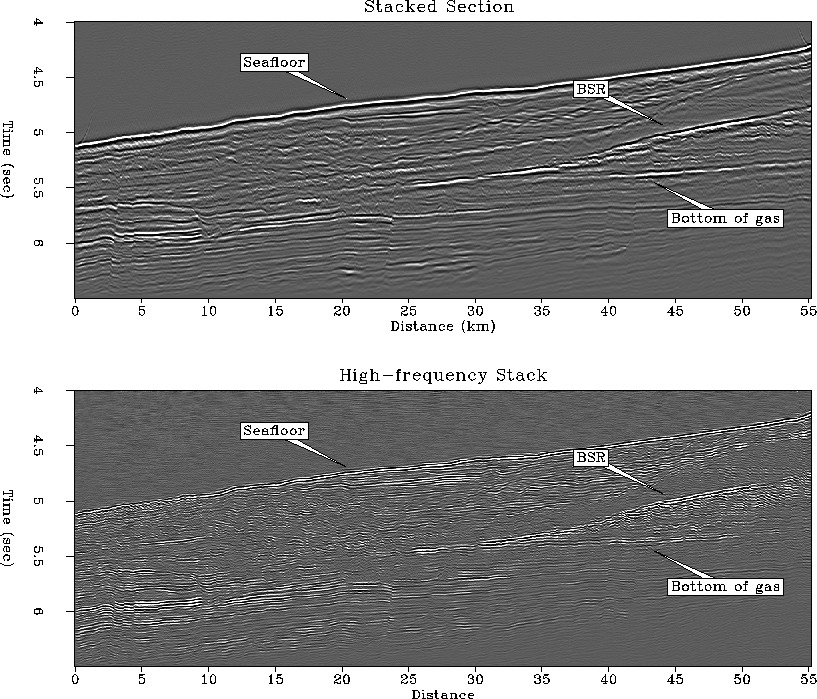 |
Figure 2 The upper panel shows a migrated stacked section of the data. High-pass filtering to frequencies above 40 Hz resulted in the high-frequency stack displayed in the lower panel.
The data consist of 1105 CMP gathers with a midpoint spacing of 50 m. The near offset is at 0.3 km and the far offset is at 3.9 km. The offset spacing is 50 m. A stacked section of the data after migration can be seen in the upper panel of Figure 2. It shows a strong seafloor reflection of more than 4s two-way travel time, suggesting a water depth of more than 3 km. It is partly underlain by a BSR reflection of opposite polarity. This is the reflection of the base of the hydrate stability field. Above the BSR, methane hydrate is present in the pore space of the sediment, while underneath the BSR the sediment is saturated with free gas. The presence of free gas has been suggested in a study by Ecker and Lumley Ecker and Lumley (1994a) and proofed by the recent ODP drilling in the area. The BSR appears to stop at a distance between 25 and 30 km. There it merges together with a reflection from underneath what probably coincides with the bottom of the free gas zone Ecker and Lumley (1994a). Shortly before both reflectors come together, the BSR splits with one part overlaying the other, suggesting a discontinuous reflection character.
 |
A high frequency stack of the data which was obtained by high-pass filtering the data to frequencies above 40 Hz can be seen in the lower panel of Figure 2. It displays a significant amount of ``thin layering'' effects underneath the BSR, in particular where the normal stacked section showed a separation of the BSR in an upper and lower part. The BSR appears to be fractured and shows partly strong interferences with the small thin structures underneath. This indicates that the reduction of frequency content by either temporal or spatial (stacking) filtering produces a more apparent lateral continuity of the BSR due to the Fresnel zone. The same effect was observed by Lee et al. 1994 in this area. The thin layering visible underneath and cutting against the BSR is suggestive of rapid lateral variations immediately beneath the BSR. There might be 3-D features, such as gas pockets, that contribute scattering or side-swipe energy which cannot be sufficiently processed using 2-D methods.